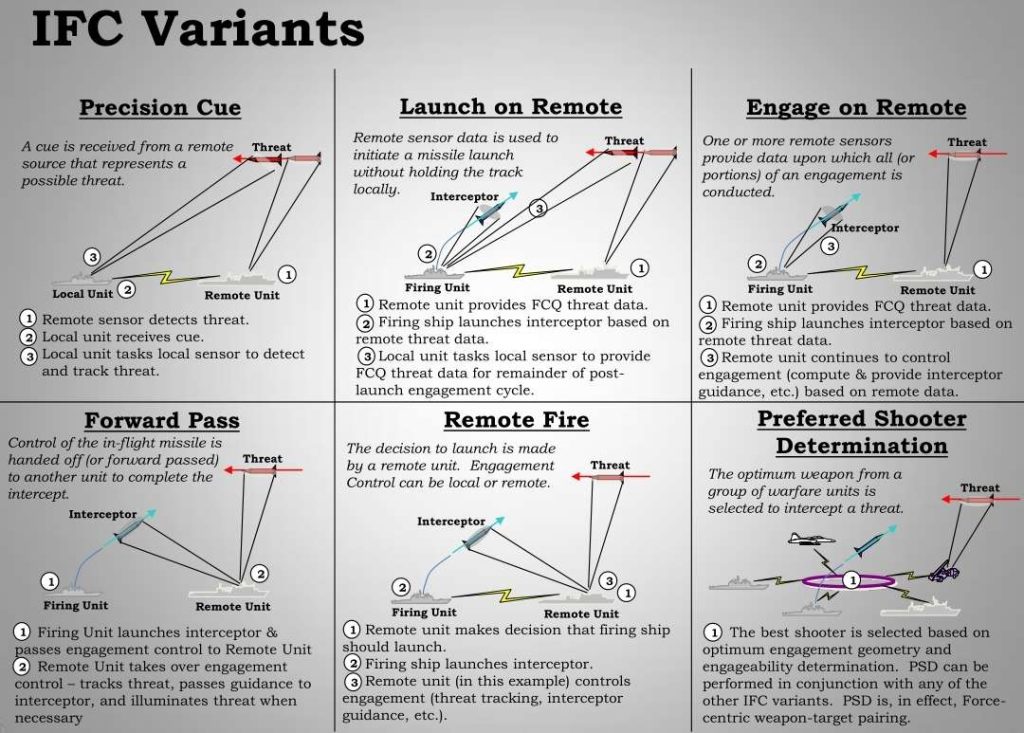The Missile Defense Agency (MDA) announced on March 28th that it had completed the second intercept of a Medium Range Ballistic Missile (MRBM) by an Aegis Baseline 9 equipped vessel using an SM-6 Dual II Software Upgrade (SWUP).

Intriguingly, the agency also announced that Australian “air, land and sea assets” had taken part in the test, representing Australia’s “most robust” participation in an Aegis test to date. While the Royal Australian Navy (RAN) operates three Aegis equipped Hobart class air warfare destroyers, it was an Anzac class frigate, HMAS Stuart (FFH-153) that took part in the event alongside a Royal Australian Air Force (RAAF) E-7A Wedgetail.
Participating U.S warships included USS Preble (DDG 88) and the first SPY-6 equipped Flight III Arleigh Burke class destroyer USS Jack H. Lucas (DDG 125).
According to the MDA press release, Australian participation in the test included a demonstration of HMAS Stuart’s “radar capabilities” which primarily consist of a CEAFAR2-L L/S-band air search radar and CEAMOUNT X-band target illuminators. The RAAF E-7A Wedgetail, meanwhile, provided communications and data collection support to the test.
“Australian sensors also provided target track data in support of a cued-organic simulated engagement, demonstrating allied interoperability,” the MDA added.
From the MDA’s statement alone it isn’t entirely clear what kind of target track data Australia provided as part of the test or whether it was provided by HMAS Stuart or the E-7A. The picture becomes a little clearer when information from the Australian Department of Defence is incorporated.
“During the test, Australia demonstrated its advanced radar capabilities aboard a Navy vessel, HMAS Stuart,” the Department of Defence said in a press release. This suggests that it was HMAS Stuart, rather than the E-7A Wedgetail, that provided target track data, however, that doesn’t answer what kind of target track data it provided.
The notion that HMAS Stuart participated in a simulated Cooperative Engagement Capability (CEC) engagement can be immediately dismissed because, while the Australian Government has previously demonstrated CEC aboard the Hobart class, and signalled its intent to integrate it into the E-7A platform, the capability hasn’t been equipped to the Anzac class frigates.
CEC is a C-band Line-of-Sight (LOS) data link designed by the United States Navy (USN) and equipped on a variety of platforms. The goal of the system is fully integrating the various sensor data from all these platforms into a single unified image which, at a high level, effectively enables one ship to fire on a track remotely using another’s sensors to perform an Engage on Remote (EOR), Forward Pass or Remote Fire capability.

Instead, it’s more likely that HMAS Suart provided a so-called “precision cue” via Link 16 datalink to USS Preble, effectively telling the American destroyer where to train its sensors to look for the incoming ballistic missile in order to perform a simulated engagement.
This capability has been demonstrated before by the U.S in partnership with L-band radar equipped allied warships like the Dutch frigate HNLMS Zeven Provinciën (F802) which “cued” USS Paul Ignatius (DDG-117) onto a ballistic missile using its Thales SMART-L radar during Exercise Formidable Shield 2021.
This “cuing” takes advantage of L-band radars’ increased range, albeit at a lower quality, compared to U.S DDGs S-band SPY-1 or SPY-6 radars to better detect ballistic missile threats.
This technique extends the sensor horizon of the ship being “cued” much farther out. Moreover, the ship can potentially conduct an engagement using this data in what is known as “Launch on Remote” (LOR).
When using this LOR technique, a vessel fires a missile using data from a second sensor before following up with more course corrections to the missile once the threat has entered the sensor range of the firing ship.
The USN and the MDA have previously demonstrated this technique during FTM-20. During this test, track data from the now retired Space Tracking and Surveillance System (STSS) was used to cue an SM-3 Block IA launch from USS Lake Erie.
Regardless of whether or not this data is used for an engagement. Cued tracks reduce the time pressure on the defender, with long-ranged sensors giving ships ample time to assess the situation and threat, rather than having to wait for the threat to enter the ship’s organic sensor range.
Zach Abdi contributed to some sections of this article.
